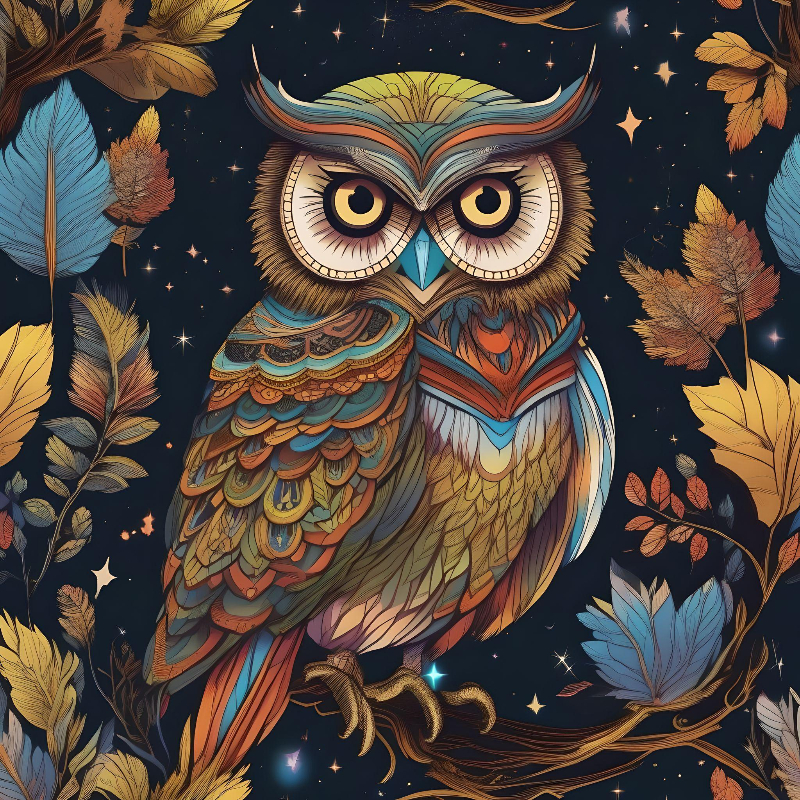Shopping Cart
-
Awesome Mobile
1 × $49.00 -
Nice Headphones
1 × $49.00

A creature of the night - to be feared or revered?
A wise sage or a bad omen?
OWLS...
Extract from our 2021 Moon Diary
Owls have for centuries been central characters in many legends, folklore, superstitions and myths across many different cultures all around the world.
Their nocturnality (yes that really is a real word - who knew?) obviously lends a little mystery to them, and meant they were not frequently seen.
The ability of some Owls to swivel their head 180 degrees must have also added to the mystery and or fear of them.
There are legends about all sorts of Owls - our familiar Obsidian has kindly informed us that currently in the world there are actually 225 different types of Owls - wow!
We really love his input but he's still on the list of suspects (i.e. the only suspect) regarding the Tiffany Lamp incident in the Library!
Meanwhile, back to Owls...
The legends are really quite extraordinary - seen by some as symbolic of evil and doom - able to grasp your very soul in their claws - and yet they are also personified by others as clever and kind creatures, willing to impart their wisdom.
Athena for example - the Greek Goddess of knowledge - is nearly always depicted with an Owl. In fact, Coins were minted with her effigy on one side and an Owl on the other.
However, over time and across different civilisations, Owls have been held in varying levels of both esteem and fear.
In ancient Rome for example, it was definitely the latter. The hoot of an Owl was claimed to have been heard prior to the death of both the Emperor Augustus and Julius Caesar.
As a herald of impending ill fortune, Owls are referred to as such in folklore, poems and plays - including Shakespeare's Macbeth and of course Julius Caesar.
So, whilst today, we may see Owls as creatures of great beauty and characterise them in roles as a source of wisdom (they are often depicted as being bespectacled, wearing a waistcoat, and carrying a book) i.e. the epitome of a wise, friendly old sage, that's definitely not how some of our ancestors saw them.
The fear began in ancient Rome, which led to the ritual practice of nailing an Owl to a doorway to ward off evil and ultimately, death itself. This belief spread throughout the (European) Roman Empire.
This fear fuelled ritual became practised throughout most of Europe and varied between nailing an Owl or an owl's head at an entrance to a home, to doing the same on a barn to protect livestock from fire or disease. This awful (especially if you were an Owl) practise, actually lasted in parts of Northern Europe right up until the 18th century.
There was an ancient Germanic belief that a life of misery would lay ahead of a child, if the sound of an Owl hooting was heard during its birth.
Samhain, being the time when the great divide between the living and the dead is at its closest, was believed to enable Owls to swoop down to the underworld and feast on the souls of the dead.
On the other hand, (or claw) in parts of central Europe, the sighting of an Owl in or around a barn was seen as a blessing and a sign of a plentiful harvest.
Owl Feathers...
Finding an Owl feather would have been seen as fortuitous, yet its use and purpose would have been very different, depending on location and beliefs.
For example, most of Northern Europe saw Owls as dark creatures of the night and as such would be associated with death - so a feather, if found, would be placed or fixed on a doorway or entrance to a home, to repel the influence of dark spirits and negative energy.
Such is the diverse universal influence of Owls, that a feather found in North America would have symbolised health, and as such would have been believed to be a barrier to keep illness out of a house and an Owls feather would protect an infant from any evil spirits when placed in a crib.
Keep in touch with our news and offers!